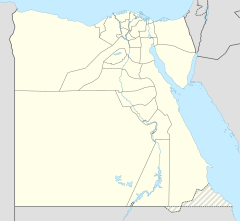Upper Egypt | |||||||||
|---|---|---|---|---|---|---|---|---|---|
| c. 3400 BC – c. 3150 BC | |||||||||
Map of Upper Egypt showing important sites that were occupied during Naqada III, around 3100 BC (clickable map) | |||||||||
| Capital | Thinis | ||||||||
| Common languages | Ancient Egyptian | ||||||||
| Religion | Ancient Egyptian religion | ||||||||
| Government | Monarchy | ||||||||
| King | |||||||||
• c. 3400 BC | Scorpion I (first) | ||||||||
• c. 3150 BC | Narmer (last) | ||||||||
| History | |||||||||
• Established | c. 3400 BC | ||||||||
• Disestablished | c. 3150 BC | ||||||||
| |||||||||
| Today part of | Egypt | ||||||||
| History of Egypt |
|---|
 |
|
|
| Periods and dynasties of ancient Egypt |
|---|
|
All years are BC |
Upper Egypt (Arabic: صعيد مصر Ṣaʿīd Miṣr, shortened to الصعيد, Egyptian Arabic pronunciation: [es.sˤe.ˈʕiːd], locally: [es.sˤɑ.ˈʕiːd]; Coptic: ⲙⲁⲣⲏⲥ, romanized: Mares) is the southern portion of Egypt and is composed of the Nile River valley south of the delta and the 30th parallel N. It thus consists of the entire Nile River valley from Cairo south to Lake Nasser (formed by the Aswan High Dam).[2]
- ^ Ermann & Grapow, op.cit. Wb 5, 227.4-14
- ^ "Upper Egypt". Encyclopædia Britannica. Retrieved 5 January 2023.

